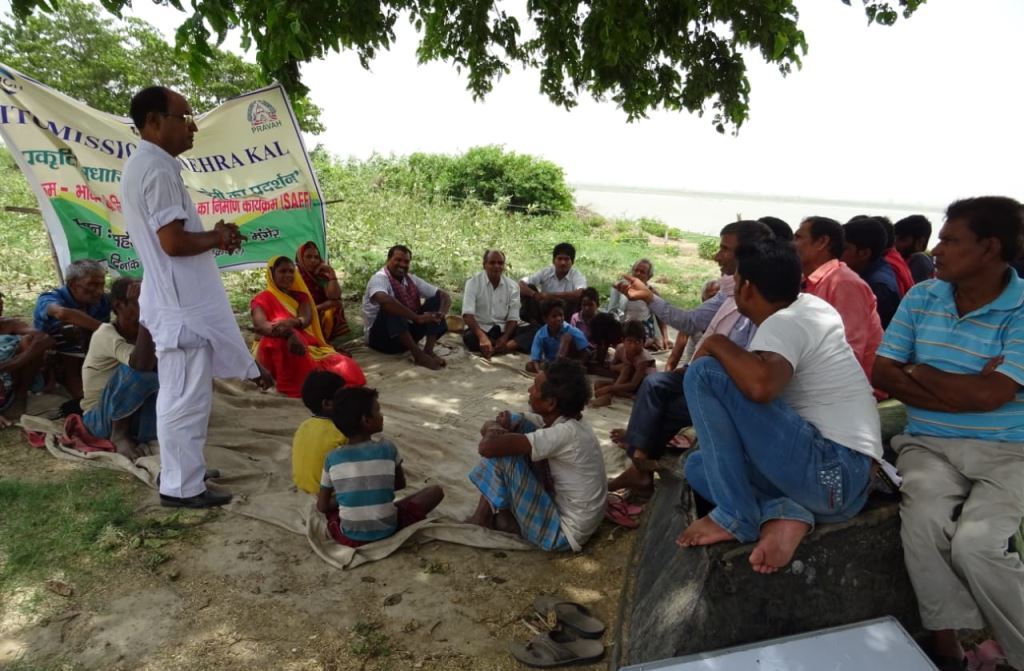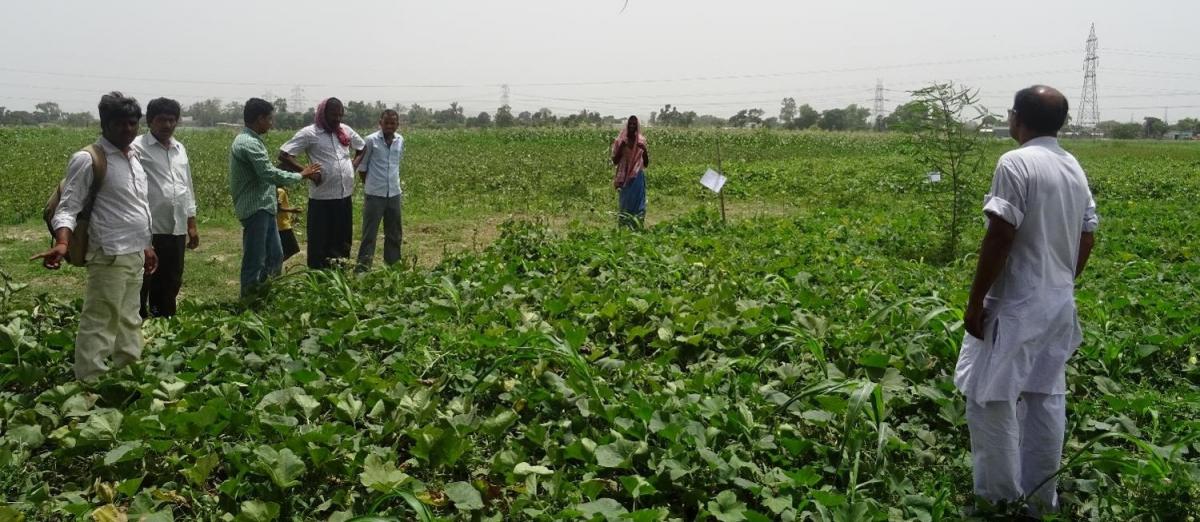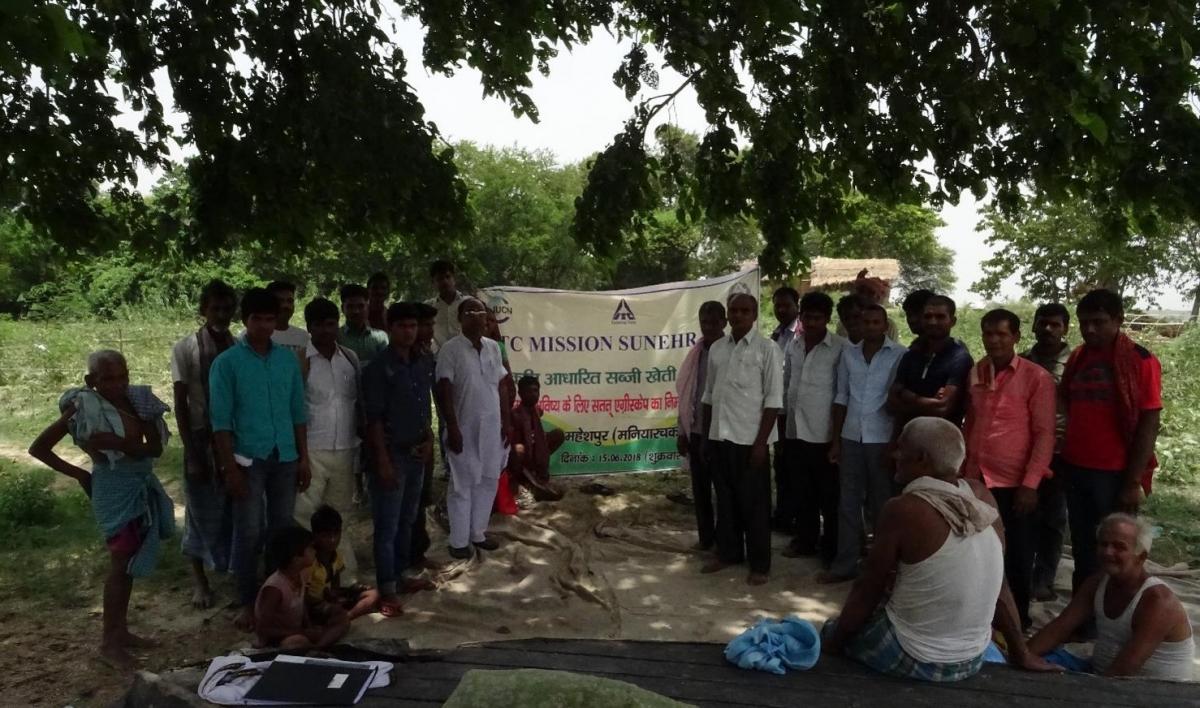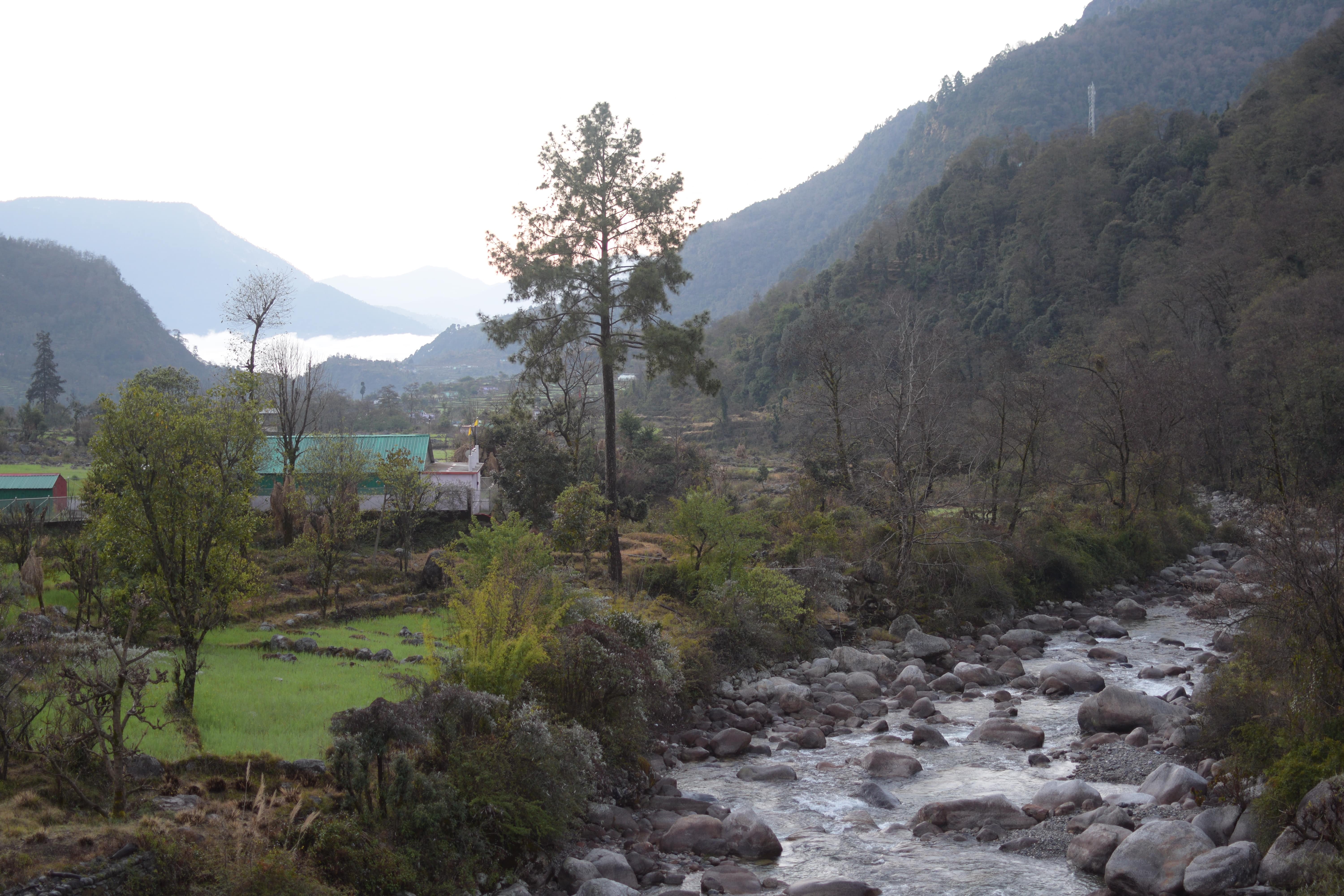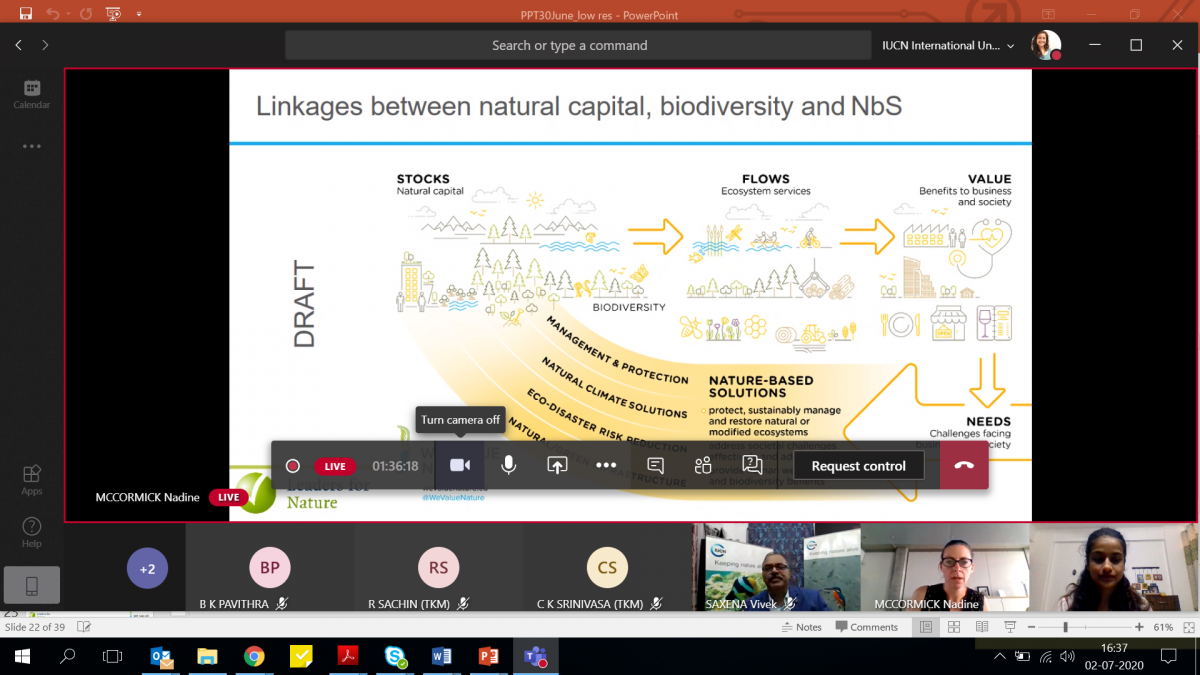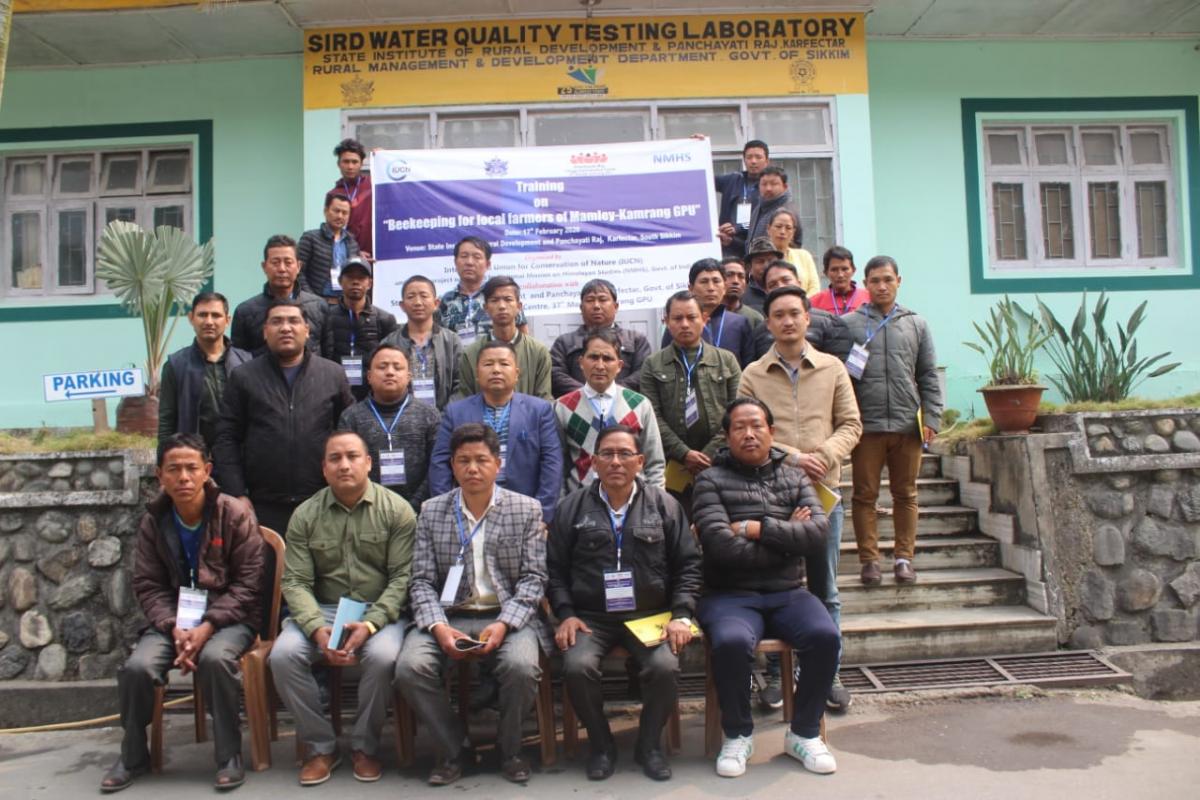Nature based agriculture and farmer field school demonstrations in Munger, Bihar
On June 15, 2018, IUCN with support from ITC Ltd. and implementation partner, Pravah, organised a farmer field school demonstration for 53 farmers from three different agriscapes of Kharagpur, Asarganj and Munger Sadar at Maniarchak, Bihar. The objective was to demonstrate the impact of nature based agriculture interventions to local farmers and also to create a comparative analysis between conventional farming and nature based farming practices.
IUCN India, with support from ITC Ltd. is implementing a project on ‘Sustainable Agriscapes for the Future’ in three clusters of Munger, Bihar. The project is working on different pilots to strengthen identified priority ecosystem service flows from ecosystems surrounding agriculture landscapes, and enable nature based livelihoods for local farmers in the landscape. The Munger Sadar cluster is in a riverine ecosystem as it is situated on the banks of the River Ganges, and is a predominantly vegetable growing area. However, the existing agriculture practice involves application of heavy doses of chemical fertilizers. According to a survey carried out by IUCN, only 2% farmers in the landscape had carried out any kind of soil testing and their dependence on heavy doses of chemical fertilizers and pesticides was largely in response to observing the same behaviour in their neighbouring farmers. Sadly, this heavy dependence on chemicals is adversely affecting soil biodiversity, and the environment at large. Chemical runoff from these landscapes into the River Ganges could potentially impact the life cycle of fishes, thus affecting the food chain of the endangered Gangetic Dolphin, Platanista gangetica, a Schedule I species according to the Indian Wildlife (Protection) Act, 1972.
 Photo: IUCN
Photo: IUCN
IUCN has been piloting ‘nature based agriculture’ practices to promote sustainable vegetable farming using comparative plots for three pilot crops in the landscape. Farmers were asked to follow their conventional farming practice on one side of the plot and the IUCN recommended practice on the other side. The difference in crop profitability and soil health was analysed between the two practices keeping all other factors constant. The main practices recommended by IUCN included (i) zero to one till; (ii) cover crop or green mulch for conserving soil moisture; (iii) seed treatment for higher germination rate; (iv) early sowing to beat the pest cycle and weather extremities; (v) bio-fertilizer and bio-pesticide/ fungicide usage; (vi) root zone irrigation; and (vii) allowing growth of native bushes and bird perches for insectivorous birds.
The comparative study revealed that the ‘nature based agriculture’ experimental plots had no land preparation cost, low fertilizer and pesticide costs, as well as low irrigation costs, thus halving the total agricultural cost. The study also found that all the demo plots gave higher profits than the conventional plots. A soil analysis revealed that all the conventional plots had low or absence of beneficial soil mycorrhiza and soil micro fauna.
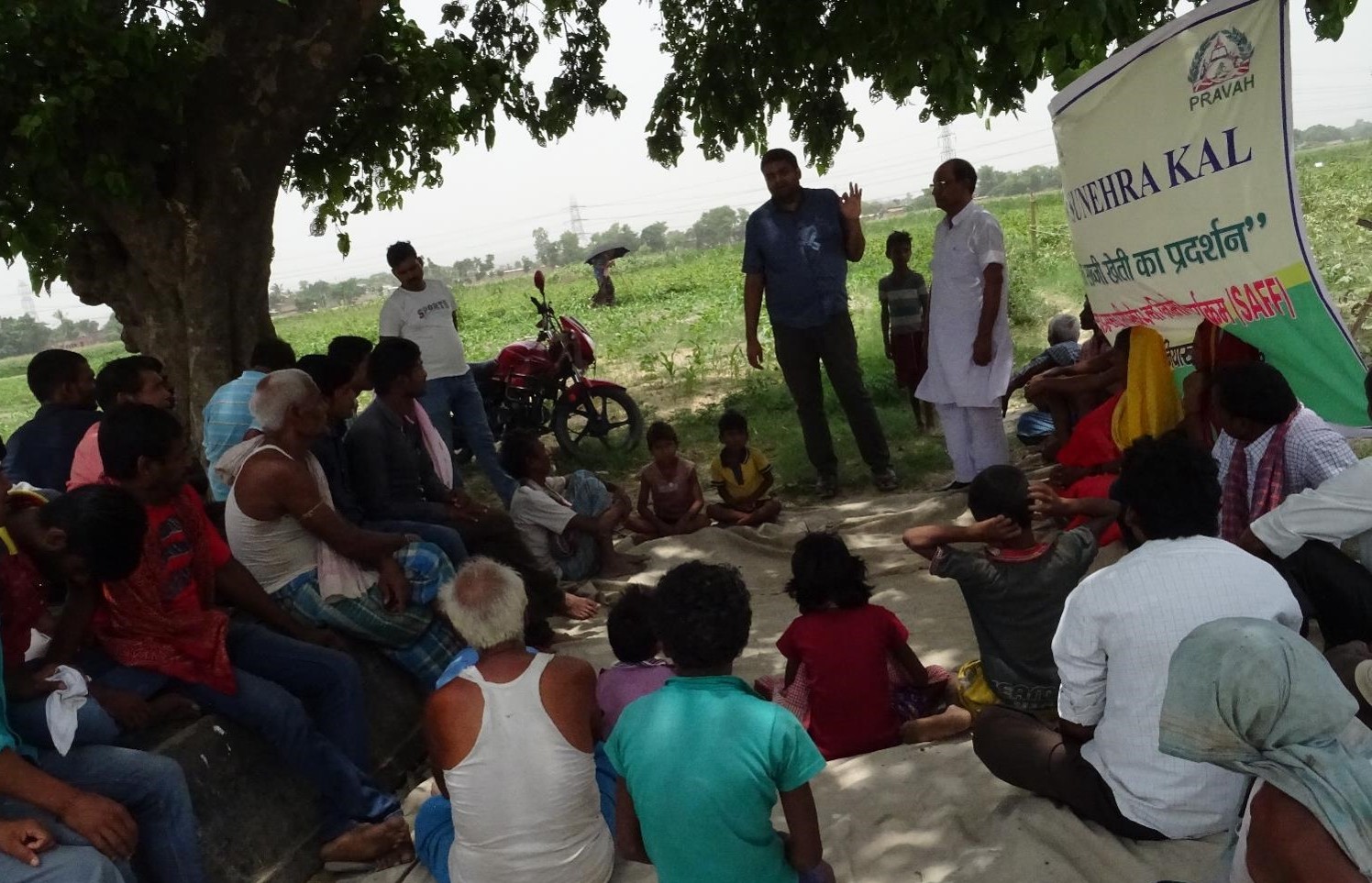 Photo: IUCN
Photo: IUCN
IUCN has been organising demonstrations for conventional farmers to these demo plots and the June 15 farmer field school demonstration was one such event where representative from four panchayats (village councils) participated. Mr. Mukund Kumar, the local agriculture and extension expert explained the entire process to the participants and also explained the method of preparing organic pesticides, their use and mode of application. Mr. Ramanand Mandal, one of the demo farmers said that his cost of farming was very low in the nature based agriculture plot. Another farmer, Mr. Rajo Mandal shared how he had plucked 34 gourds in a single day, whereas earlier the highest number of gourds he had ever plucked in a day was 23 using conventional farming techniques.
To read more on the sustainable agriscapes project, please click here.
